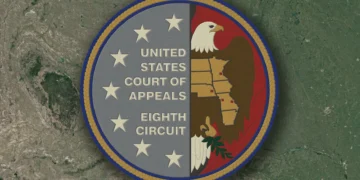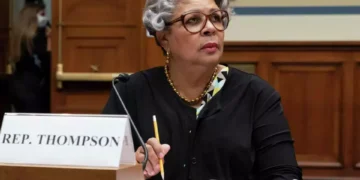May 16, 2025 Story by: Editor
Two former independent‑agency board members, Merit Systems Protection Board member Cathy Harris and National Labor Relations Board member Gwynne Wilcox, have returned to the U.S. Court of Appeals for the D.C. Circuit to challenge President Trump’s authority to remove them without cause.
Their appeals, heard on May 16, 2025, focus on whether the president overstepped statutory and constitutional limits when he dismissed both officials earlier this year.
Background of the Firings
In January 2025, President Trump abruptly removed Harris and Wilcox from their five‑year terms, citing no statutory grounds for their dismissal. Federal law generally protects members of independent agencies—like the MSPB and NLRB—from removal except for inefficiency, neglect of duty, or malfeasance in office.
Wilcox, notably the first Black woman on the NLRB, and Harris, one of the few Democratic voices on the MSPB, both asserted their firings violated long‑standing Supreme Court precedent and statutory protections.
Lower‑Court Decisions
A three‑judge D.C. Circuit panel initially reversed their removals in a 7–4 decision, relying heavily on the 1935 Supreme Court case Humphrey’s Executor v. United States, which held that Congress may insulate certain agency officials from presidential removal to preserve agency independence. The panel barred the Trump administration from filling their seats—paralyzing the MSPB and NLRB by depriving both bodies of the quorum needed to decide critical personnel and labor‐relations disputes.
Trump Administration’s Appeal
The Biden‑appointed judges’ ruling prompted a swift appeal by the Justice Department, arguing that presidential removal powers inherent in Article II of the Constitution extend to independent‑agency officials, and that Congress cannot unduly restrict the president’s ability to ensure faithful execution of the laws. The administration contends that Humphrey’s Executor was wrongly decided and that newer precedents—such as Seila Law LLC v. Consumer Financial Protection Bureau (2020)—support broader presidential control over executive‐branch personnel.
Oral Arguments and Key Issues
At the D.C. Circuit hearing, judges probed whether the president must have “for‑cause” findings before removing independent‑agency members. They explored the tension between Humphrey’s Executor and Morrison v. Olson (1988), which affirmed for‑cause removal protections for officers exercising “narrowly defined” powers. Wilcox’s counsel highlighted that the NLRB’s insulating statutes explicitly limit removal to neglect or malfeasance—protections echoed by decades of bipartisan consensus.
Broader Implications
Legal experts warn the case could reshape the balance between executive authority and agency independence across the federal government. A ruling in the administration’s favor could undermine separation‑of‑powers guardrails, enabling future presidents to purge holdover officials from agencies such as the Federal Reserve or Securities and Exchange Commission. Conversely, upholding for‑cause protection would reinforce Congress’s prerogative to design agencies insulated from political swings.
Path to the Supreme Court
Given the constitutional stakes, both sides expect the D.C. Circuit’s decision to be appealed to the Supreme Court. A final ruling could either reaffirm the century‑old Humphrey’s Executor precedent or usher in a new era of expansive presidential removal power. For Harris and Wilcox, the outcome will determine not only their personal fates but also the future independence of America’s regulatory and personnel‐management agencies.

















